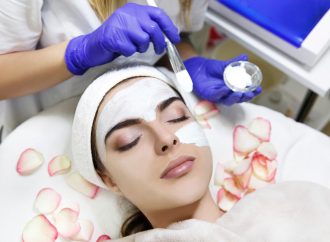Dark circles under the eyes have long been a beauty mystery that many individuals strive to solve. These pesky shadows can make us look tired, aged, and even unhealthy. However, the key to banishing dark circles lies in understanding their underlying causes. In this in-depth exploration, we uncover seven common reasons why dark circles appear
Dark circles under the eyes have long been a beauty mystery that many individuals strive to solve. These pesky shadows can make us look tired, aged, and even unhealthy. However, the key to banishing dark circles lies in understanding their underlying causes. In this in-depth exploration, we uncover seven common reasons why dark circles appear and provide practical solutions to help you solve this beauty conundrum once and for all.
1. Genetics: The Inherited Factor
The first piece of the dark circle puzzle lies in our genes. Some individuals are genetically predisposed to having thinner skin or hyperpigmentation around the eyes, making dark circles more visible. While you can’t change your genetic makeup, there are steps you can take to minimize their appearance.
2. Lack of Sleep: Unmasking the Culprit
The lack of quality sleep has long been associated with dark circles. Insufficient rest can lead to blood vessels under the eyes becoming dilated and creating a shadowed effect. Establishing a consistent sleep routine and prioritizing quality rest can work wonders in reducing the appearance of dark circles.
3. Age-related Changes: The Passage of Time
As we age, the delicate skin around the eyes becomes thinner and loses its elasticity. This can contribute to the visibility of underlying blood vessels and the development of dark circles. Incorporating anti-aging skincare practices, such as using moisturizers, eye creams, and gentle massages, can help minimize the effects of aging on the appearance of dark circles.
4. Allergies: The Hidden Trigger
Allergies can wreak havoc on the delicate skin around the eyes, causing inflammation, puffiness, and dark circles. Identifying and managing your allergies through medication, avoiding triggers, and utilizing soothing remedies can help alleviate this specific cause.
5. Sun Exposure: Unmasking the Impact
Excessive sun exposure can stimulate the production of melanin, resulting in hyperpigmentation and the formation of dark circles. Shielding the skin around the eyes with sunscreen, wearing sunglasses, and seeking shade during peak sun hours are crucial steps in preventing and minimizing dark circles caused by sun damage.
6. Unhealthy Habits: Unveiling the Culprits
Unhealthy lifestyle habits, including smoking, excessive alcohol consumption, and poor nutrition, can contribute to the development of dark circles. Quitting smoking, moderating alcohol intake, adopting a nutrient-rich diet, and staying adequately hydrated can significantly improve the skin’s health and reduce the appearance of dark circles.
7. Stress and Fatigue: The Silent Saboteurs
Stress and fatigue can take a toll on our overall well-being and manifest visibly through the appearance of dark circles. Implementing stress-management techniques, such as regular exercise, meditation, and self-care practices, can help alleviate the impact of these factors on our skin’s health.
Solving the Mystery: Your Action Plan
To address dark circles effectively, it’s crucial to identify the underlying causes and implement targeted solutions. Consider incorporating the following strategies into your routine:
– Prioritize quality sleep and establish a consistent sleep schedule.
– Protect your skin from harmful UV rays with sunscreen and sunglasses.
– Manage allergies through medication and avoidance of triggers.
– Adopt a healthy lifestyle that includes a balanced diet and hydration.
– Practice stress-management techniques to reduce the impact of stress and fatigue.
– Utilize targeted skincare products that address dark circles, such as eye creams or serums containing brightening and hydrating ingredients.
– Consult with a dermatologist or skincare professional for personalized advice and potential treatments, such as chemical peels or laser therapies.
Remember, finding the most effective approach to addressing dark circles may require experimentation and
patience. Everyone’s skin is unique, and what works for one person may not work for another. With consistency and the right combination of strategies, you can unravel the mystery of dark circles and unveil a brighter, more refreshed appearance.























Leave a Comment
Your email address will not be published. Required fields are marked with *